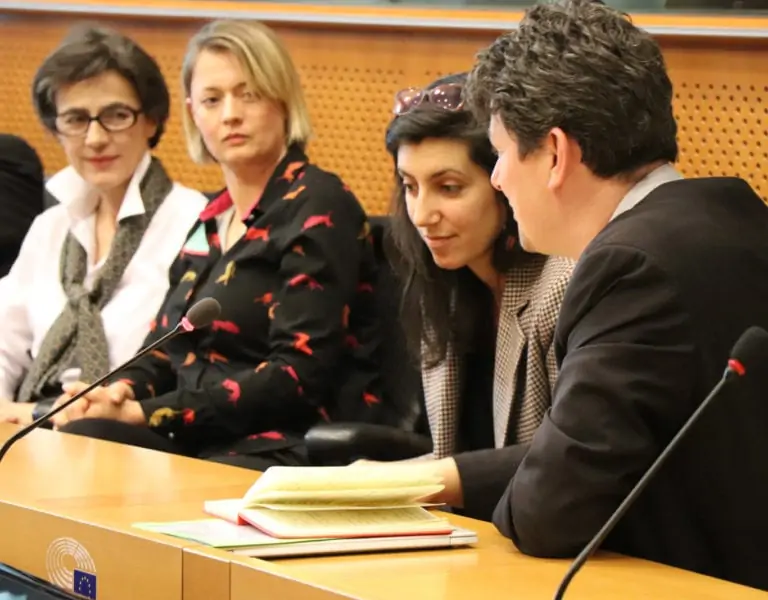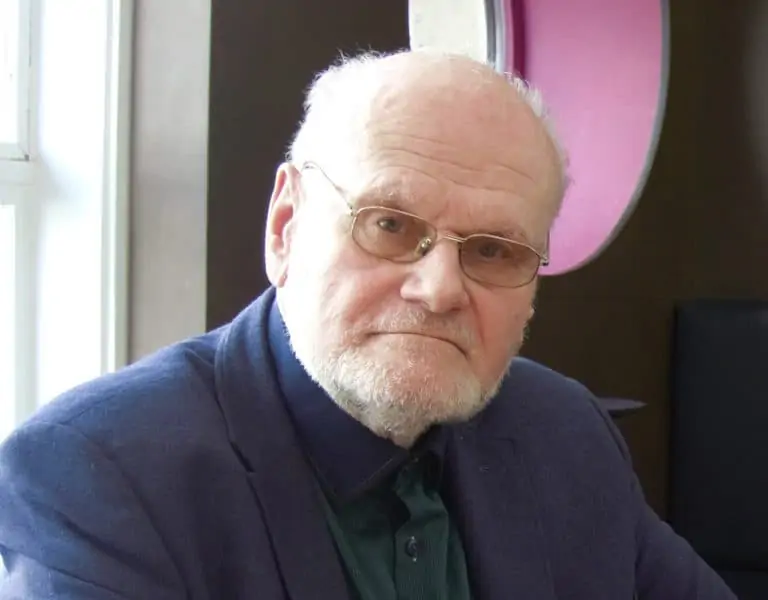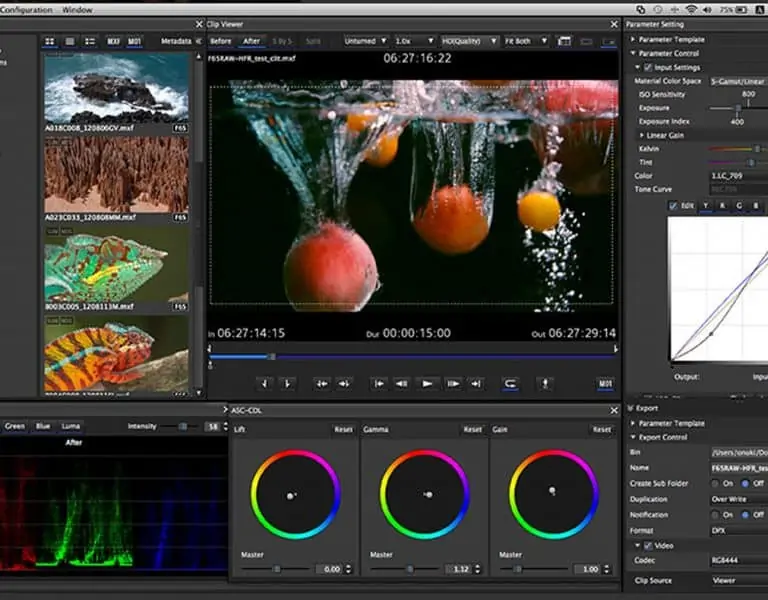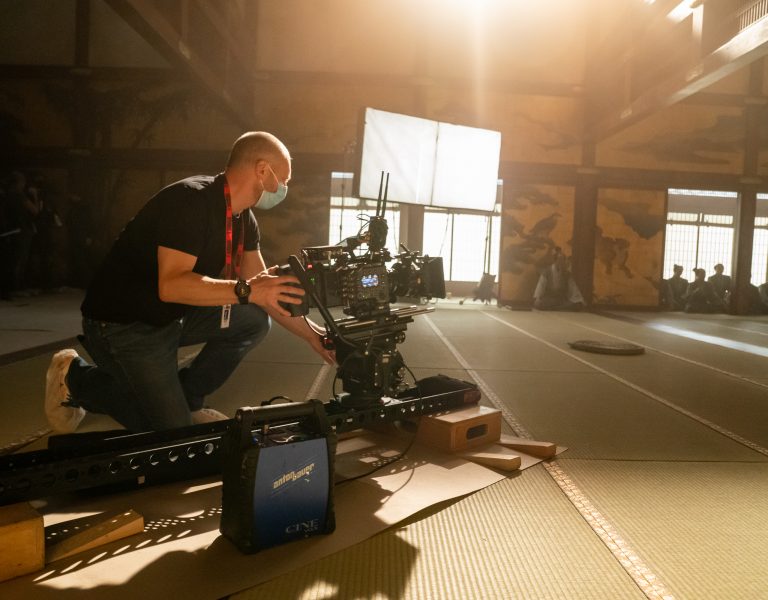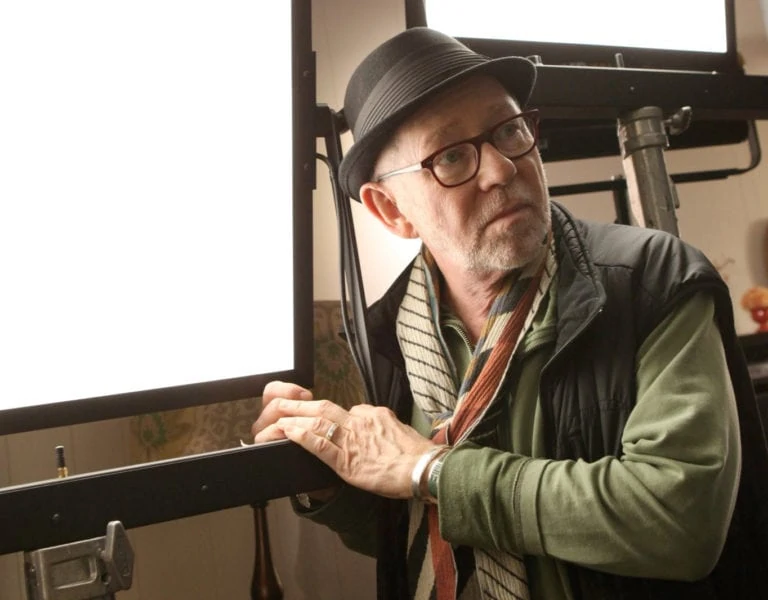FIGHTING FOR A FAIRER FUTURE
As she takes over the reins of IMAGO’s influential D&I committee, Bojana Andrić SAS sets out the society’s pledges to help create a more diverse cinematographic landscape.
IMAGO’s Annual General Assembly (IAGA) was held at Rome’s Cinecittà in March 2023, bringing more than 70 people – delegates from different member countries, Board members, AIC hosts and sponsors – offline and on site. They gathered for the first time since the pandemic, but with an additional special occasion – the 30th anniversary celebration of IMAGO’s foundation by the Italian master cinematographer Luciano Tovoli AIC and his friends, cinematographers from UK, France and Germany, at the same venue in early ‘90s.
This was an exceptional event after a difficult period, reminding us that IMAGO is not only a bureaucratic international federation composed of 55 countries, but also a group of companions who all have the same goal – celebrating, promoting, and sharing the art and craft of cinematography. And that’s exactly what happened; idea sharing, an extraordinarily good energy and fellowship exchanged, many friendships renewed, and with the arrival of the new generation among delegates, many new ones were established. During the three-day agenda of celebration, many other events happened in the prestigious Palazzina Fellini besides the IAGA: technical and equipment presentations, a panel on the future of cinematography, a tribute to IMAGO’s founder and a film screening, cocktails and last but not least, IMAGO committee presentations.
Earlier this year D&I co-chairs and founders Nina Kellgren BSC and Elen Lotman ESC decided it was about time to pass the torch of the committee to the next generation and to ensure its transition to the next era. As a co-vice president of IMAGO who was participating in some of the previous D&I panels, I was invited to be the one to establish and organise the transition with their full support, advice and experience sharing on that road. Many fresh voices have expressed their desire to be part of the committee, and a call to member societies and their cinematographers was spread. We all met and agreed what would be our future steps and a roadmap to follow.
The D&I committee was established in 2016 – a notable year that simultaneously saw many other diversity and inclusion collectives established as well. The committee’s aim was to address the striking historical lack of diversity in cinematography, to help under-represented minorities, and to spread the change leading to less marginalisation and discrimination, driven by the adage: ‘If you can see it – You can be it.’
Over seven years an incredible inspirational job was done by co-chairs and other active committee members and their partners. We saw awareness being raised and unstoppable changes in perception.
So, where are we at?
First, I would like to highlight that the IMAGO ethics policy adheres to certain principles, the first of which is ‘Be Inclusive’:
“IMAGO welcomes and supports cinematographers of all backgrounds and identities. This includes but is not limited to members of any sexual orientation, gender identity and expression, race, ethnicity, culture, national origin, social and economic class, educational level, colour, immigration status, sex, age, size, family status, political belief, religion, and mental and physical ability.”
As a federation consisting of 55 countries, we are multicultural, and every country has its minorities. Almost as a rule, these minorities are underrepresented in cinematography.
We believe that in this new era, where almost every society or even manufacturer has started to put efforts to address diversity and inclusion, we should continue to be loud, but also focus on more specific actions. On our committee we have members from all around the world and we are using their local experiences and good practices as successful examples to mirror.
We are starting from the beginning with studies. We want to include educators and professors, as they have responsibility from the early days of each cinematographer. We are witnessing more and more female students are enrolling in education institutions but this number drops significantly as they progress. The numbers of female cinematographers working in high positions are very low – in some countries as low as even 0% – so we will start putting more focus on those countries.
We are doing research to make a shadowing/mentorship programme for young cinematographers, allowing them to be present during all phases of production – even to take some responsibilities on their own.
Talking about numbers, for us they are important. Based on the ACS study ‘A Wider Lens’, we are planning to try to grow it into a global study. Work-life balance and maternity are important subjects, as well.
The glass ceiling is still very present, and we have seen a few examples of breaking it, but exclusively in the most developed and richest industries that also have the highest figures and awareness. Nevertheless, the fact is that only three female cinematographers have ever been nominated for the Oscar award since 1929, and all three since 2017.
We plan to be vocal, starting with producers to understand the importance of giving a chance to diversity, using the fact that they could get incentives to get better conditions for funding in case of more diverse crews (some EU examples) – but at the same time making sure that tokenism is not the actual result. We invite all decision-makers – executives, producers, agents, funds, festivals, distributors, even media workers – to join this effort, helping us to be visible.
